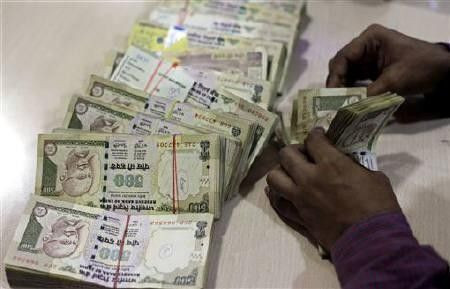India?s Central Bank Intervenes To Protect Weak Rupee; Trade Deficit And Tax Law Impacting Foreign Investment

The sharp decline in the Indian rupee coupled with strong demand for the dollar forced the Reserve Bank of India (RBI) to intervene and announce measures to ease the pressure on of the rupee. The RBI Friday raised the cap on interest rates for foreign currency non-resident (FCNR) deposits of banks with maturities of one year to less than three years to 200 basis points above the LIBOR or swap rate. The current interest rate is 125 basis points.
The rupee traded close to 54 per dollar Friday. The country's widening trade gap, strong dollar demand from importers, confusion over the government's taxation policies and the resultant slump in foreign investments have struck the rupee hard, taking it to a four-month-low against the dollar.
The cap on three-to-five-year deposits has been raised to 300 basis points from 125 basis points. Banks can also fix the interest rates on export credit in foreign currency. Analysts believe that though this will encourage foreign fund inflows from NRIs, the impact will not last long.
Maybe some foreign fund inflows will be augmented because of this step, but I don't think it is enough to stop the downward fall of the rupee, Ashtosh Raina, head of foreign currency trading at HDFC Bank, was quoted as saying by Reuters.
Forex analysts are of the opinion that both the RBI and the government should undertake serious measures to reduce the fiscal trade deficit and solve issues relating to taxation policies to attract foreign investors as a long-term solution to stabilize the rupee.
These measures will aid from the sentiment perspective, but a structural solution will be addressing the fiscal deficit, current account deficit and growth, Reuters quoted Hitendra Dave, head of global markets, HSBC, as saying.
Analysts point out that the foreign investors are apprehensive of investing in India due to lack of clarity regarding its taxation provisions mentioned in the new General Anti Avoidance Rule (GAAR).
If the rupee breaks 53.50 per dollar level, the next level will be a lifetime low of 54.30 per dollar. The resistance level for the currency is seen at 53.50 per dollar, I think it's very important that we get clarifications around the General Anti Avoidance Rule or GAAR [General Anti-Avoidance Rule]. If they think that it is very difficult to live with, there is uncertainty and that's what curbing inflows is at the moment, NDTV Profit quoted Agam Gupta, MD- Head of FXRC Trading - India at Standard Chartered, as saying.
The RBI has been intervening from time to time to protect the rupee, but such interventions so far have remained effective in short-term. From September through February, the RBI sold $20.14 billion to protect the rupee.
© Copyright IBTimes 2024. All rights reserved.





















